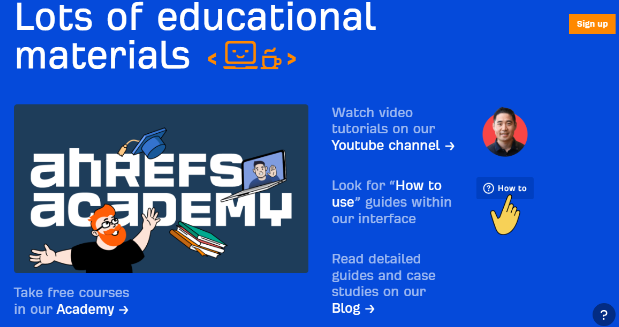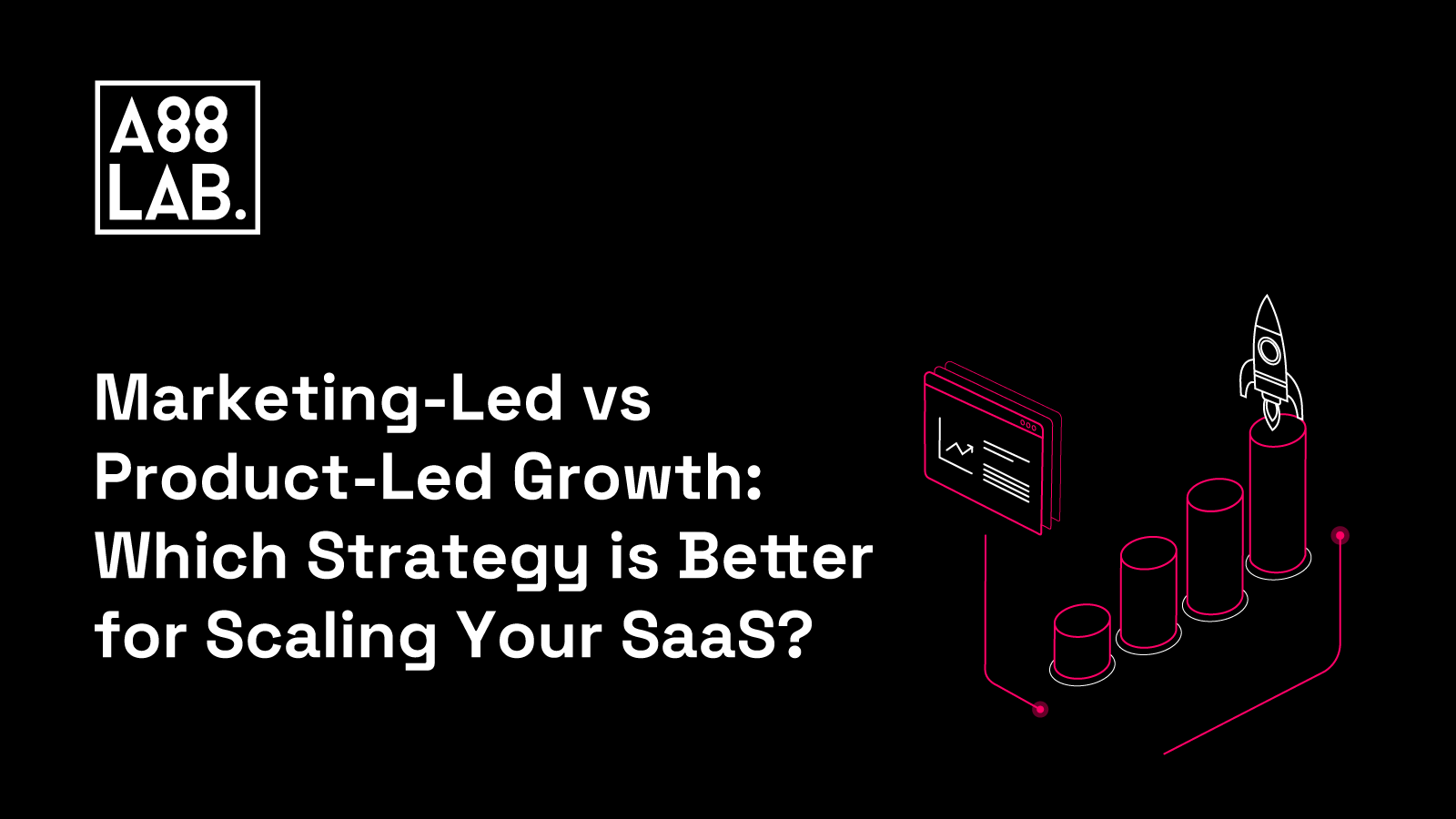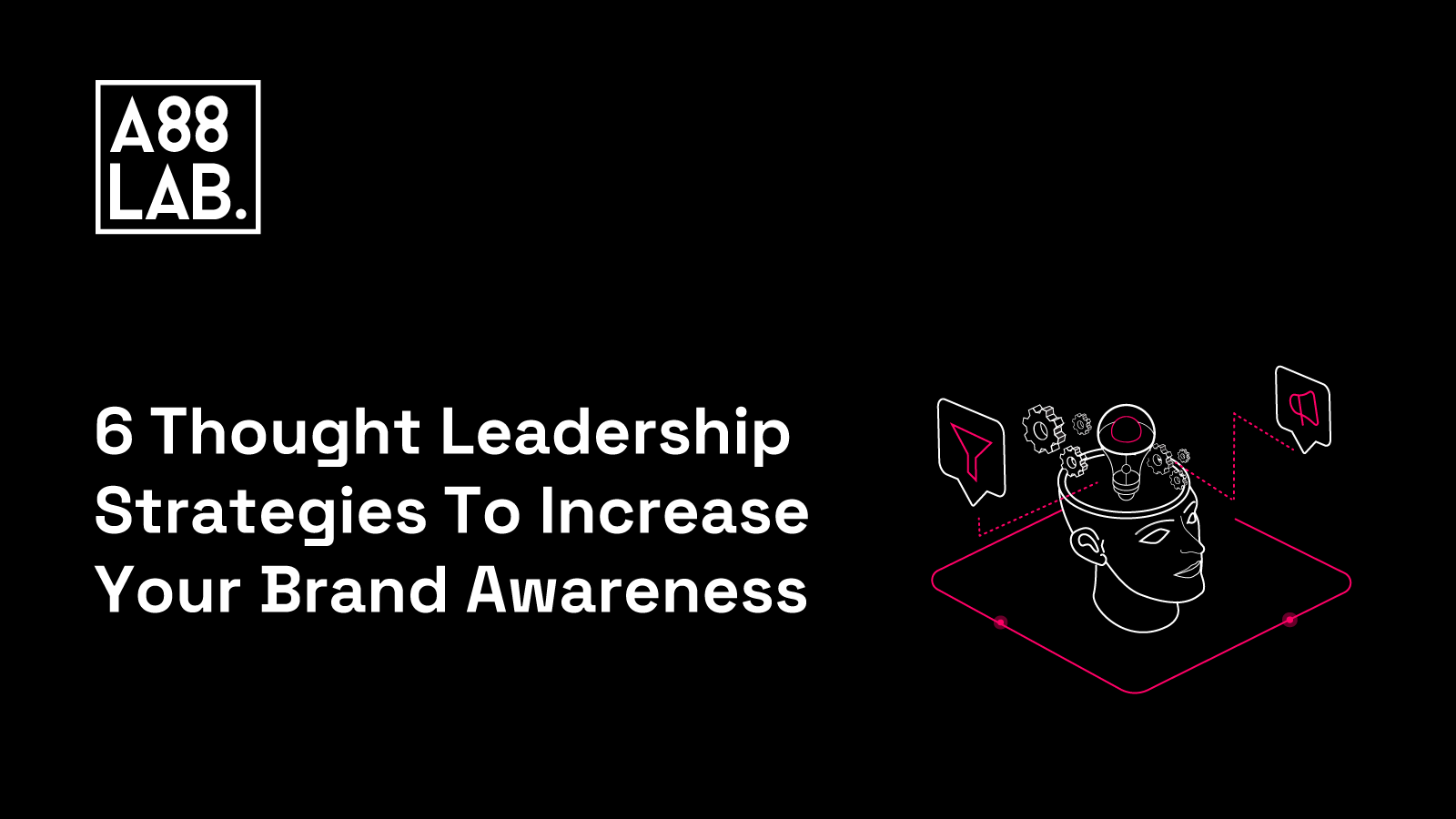For years now, the SaaS industry has been buzzing with debates about the most effective growth strategies. Customer-led, sales-led, marketing-led, partner-led, product-led, and countless other strategies have all been put under the microscope in an attempt to figure out which one is best for scaling a SaaS business.
Among these debates, two main strategies have emerged as strong contenders: marketing-led and product-led. You've got the product-led growth (PLG) enthusiasts, who argue that an impeccable product is the ultimate key to high-growth success, pointing fingers at the success of Atlassian and Hootsuite.
On the flip side, you've also got the marketing-led growth (MLG) advocates, and they have some heavy hitters like Drift and Ahrefs backing up their choice with massive growth figures.
So, which of these is the golden growth ticket for SaaS businesses?
The answer, as always, isn't a simple one and depends on several factors. In this blog post, we'll explain the differences between marketing-led and product-led approaches, their strengths and weaknesses, and try to help you decide which strategy best suits your SaaS.
Understanding Marketing-Led Growth (MLG)
Marketing-led growth is, as the name suggests, is a growth strategy that is primarily driven by marketing efforts. For example, if someone books a demo or becomes your customer because of a blog article they've read the video they’ve watched, or an eBook or whitepaper they downloaded from your website, we'll pin that success on marketing-led growth.
MLG is built around the concept of creating interesting, valuable content and promoting it through different channels to attract and convert leads into customers. The idea is to use whatever marketing channels are appropriate for your target audience, build brand awareness, gain trust, and ultimately drive conversions.

Ahrefs - an example of a successful MLG strategy
Your first reaction may be, "Well, that sounds an awful lot like good old inbound marketing with a shiny new name." And you wouldn't be completely wrong, except that MLG is a bit more than just inbound marketing rebranded.
To understand what sets MLG apart from inbound marketing, we need to start by distinguishing the meaning of growth from inbound.
Growth vs Inbound Marketing: A Comparative Look
If you've seen season two of "The Office" you probably remember this scene:
Ryan 🤔: Is it cheaper to sign a new customer or to keep an existing customer?
Dwight 😉: Keep an existing…
Michael 😖: Shut it. Can I just do it, please? It's equal.
Ryan 😬: It is ten times more expensive to sign a new customer.
Ryan is not entirely wrong: The usual rule of thumb in the SaaS world is known as the 5-3-2 rule. It means it costs five times more to acquire a new customer than to retain an existing one.
But what does that have to do with growth or inbound marketing?
Every time you have to replace a customer, you basically double your workload – not only do you have to keep trying to earn new clients (the goal of any business), but you also need to replace the revenue from the lost client.
This sentiment is the essence of growth marketing, which focuses on acquiring the right customers who will stay with your company long-term. Instead of addressing the top of the funnel (where customers are first attracted to your business), this method looks at the entire customer journey to ensure there are strategies in place to attract and retain the right customers. Hence, the emphasis on customer lifetime value (CLTV), customer retention, and well, growth.
In contrast, inbound marketing is a bit more traditional approach to marketing that relies heavily on creating informative and engaging content to draw in potential customers. This approach is based on the idea that by providing valuable information and resources, you can attract customers to your business organically.
Companies that see a lot of success with inbound marketing often have a strong content strategy in place, as well as a solid understanding of their target audience and the type of content that will resonate with them.
Finally, growth marketing goes beyond inbound techniques by using paid advertising, email campaigns, and other tactics to actively reach out to potential customers. While inbound focuses on attracting customers through content and organic channels, growth marketing takes a more proactive approach by using targeted outreach methods to increase conversions and revenue.
If this distinction is clear, let's jump back to the marketing-led approach.
The Benefits of a Marketing-Led Strategy
Before we talk about the benefits of a marketing-led approach, let's break down the MLG strategy into its key components:
Acquisition: This is where your marketing team drives website traffic via social media, SEO, and advertisements. Potential customers come across intriguing blog content, eBooks, newsletters, or infographics related to your SaaS product and reach out or sign up for a demo.
Retention: Post-acquisition, your team uses emails, in-app messages, and notifications to sustain customer engagement. They communicate the product’s actual value and keep sharing case studies, usage scenarios, customer success stories, and more.
Monetization: At this stage, nurturing leads to becoming paying customers, which is key. This involves everything from sending email campaigns to making phone calls or additional demos with the ultimate goal of converting them into paying users.
When you look at it, the focus is more on building a perceived value of the product rather than delivering its actual value since the customers don't actually get to engage with the product until after the acquisition stage.
If you look at companies like Ahrefs, they don't even have a free trial option and rely solely on their marketing-led strategy to attract and convert customers. Just look at their repository of blog posts, videos, and courses, and you will quickly understand why their marketing-led approach has been so successful.
The advantages of a marketing-led growth strategy include:
-
Wider reach: With the right marketing tactics, you can attract potential customers from all corners of the internet, even if they have never heard of your product before
-
Increased brand awareness: Through consistent messaging and content, you can build a strong brand that resonates with your target audience.
-
More control over the customer journey: Since marketing-led growth focuses on driving website traffic and building interest in the product, companies have more control over how potential customers perceive and interact with the product.
-
An easier way to narrate your mission: Sharing relatable stories and experiences through marketing content helps create an emotional connection with potential customers, making it easier to communicate the company's mission and value.
Will marketing-led work for every company? Of course not, just like any other strategy. If you don't have enough resources to create high-quality content or don't have a clear understanding of your target audience, then marketing-led growth may not be the most effective strategy for your company.
Why Does Product-Led Growth Matter Now More Than Ever?
How many ads do you get bombarded with every day? How many emails do you delete without even reading them? The world has become a marketing noise machine, and we all learned to tune it out.
Let's take it even further. Do you believe everything that you read in an ad? How much do you trust traditional advertising methods? Chances are, not as much as you used to. People are increasingly tech-savvy and skeptical, and breaking through the clutter and reaching your target audience is not as easy as it used to be.
Related Article: Product-Led Growth: The Essentials for B2B SaaS
At least not if you rely solely on traditional marketing methods. But if you mix it up with a product-led approach, things start to change.
While marketing-led growth promotes the product, product-led growth puts the product itself at the forefront of the strategy. When focusing on PLG, your product is the star that does all the necessary customer acquisition efforts for you. This results in lower costs for acquiring customers, which, in turn, leads to lower SaaS prices. Lower prices mean increased investment in your product, leading to a better customer experience. As you can see, this creates a cycle of improvement that benefits both you and your customers.
The basic idea is simple: create a great product and match it with an amazing user experience. If the product can speak for itself and provide value to users, then it will naturally attract more customers through positive word-of-mouth.
Mixpanel’s product tour - example of a successful PLG strategy
Some other advantages of a product-led strategy include:
-
Faster and more efficient growth: PLG is not just about growth; it’s about faster and more efficient growth. Lowering the barriers to entry and allowing your customers to try your SaaS for free makes them feel more welcome and comfortable. It's an easy and effective way to attract more users to your conversion pipeline.
-
Shorter sales cycle: PLG widens the top of your sales funnel, allowing users to try your product without talking to anyone from your company. The self-onboarding part of PLG lets users educate themselves, resulting in reduced costs for sales. Additionally, users can upgrade themselves without talking to anyone from your team. The benefits of PLG go beyond the top of the funnel. It can also include onboarding or expansion, where users hit a certain limit and upgrade themselves without having to talk to anyone from your team.
-
Improved customer experience: PLG helps you improve the customer experience by designing products while keeping users in mind. It creates fast and enjoyable user experiences that lead customers to better product value and stress-free onboarding processes.
-
Better product-market fit: When implementing PLG, you get access to extra user experience data and customer feedback. This not only helps you understand the needs of your customers and the market but also allows you to optimize your product to achieve better product-market fit. By gaining a deeper understanding of your customer's needs, you can evolve your product to meet those needs perfectly.
The benefits of product-led growth are many, and they increase over time. Every new user that enters the funnel creates more data. Each data point presents an opportunity to enhance the product so that more users can join. This cycle repeats itself continuously. At the same time, your presence in the SaaS industry expands alongside your revenue.
Marketing-Led Growth vs. Product-Led Growth
Marketing-Led Growth and Product-Led Growth are two different approaches to scaling a SaaS business, each with its specific focus and methodology.
MLG centers on using marketing efforts to attract and convert leads into customers. It involves creating valuable content and utilizing various channels such as social media, SEO, and advertisements to build brand awareness, gain trust, and drive conversions. The emphasis is on building perceived value before customers engage with the product.
On the other hand, PLG positions the product itself as the primary driver of growth. The focus is on creating a product that satisfies customer needs, relying on its virality to attract customers. PLG companies aim to reduce dependence on marketing or sales teams, allowing the product to drive conversions through self-service channels, ultimately lowering marketing and sales costs.
One key difference between these two approaches is in customer acquisition strategies. While MLG uses diverse marketing channels like content marketing and paid advertisements, PLG reduces its dependence on marketing or sales teams and mainly relies on the product to drive all the necessary conversions.
PLG companies often provide free trials or free plans, allowing users to experience the product before committing to paid features, which occur later in the lifecycle. On the other side, MLG companies monetize early in the customer journey, focusing on building perceived value to drive conversions.
Which One is Right for Your SaaS Business?
In reality, no SaaS company is 100% PLG or 100% MLG. The most successful SaaS companies use a combination of marketing-led and product-led to acquire and convert customers. Even primarily product-led growth companies understand the importance of strategic marketing and sales. Finding the right balance depends on your goals, product features, and market dynamics. It's all about figuring out what works best for you.
If you're looking to build brand awareness quickly and monetize customer relationships, you might want to focus more on marketing-led growth strategies. If you have a SaaS that is simple, easy to use, and you have resources to provide a free trial, a product-led strategy will work pretty well for you.
Ultimately, the key to sustainable growth is striking the right balance among these growth strategies.
And if you liked the content, feel free to join our community and subscribe to our newsletter 👇 and receive similar content straight to your inbox.
.png)


.png)